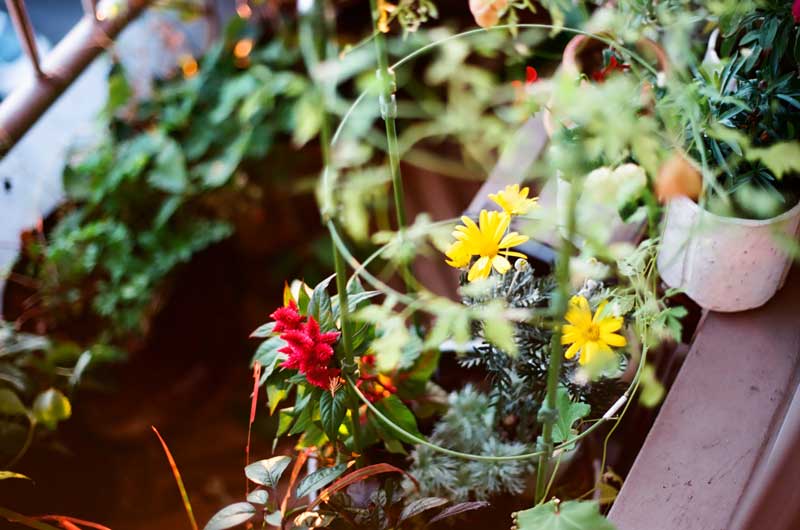
Many times people cannot believe it when I tell them that I have hundreds of plants on my tiny Tokyo balcony. I guess it’s a “more is more” philosophy, combined with a reluctance to reject attractive plants I buy each week.

Many times people cannot believe it when I tell them that I have hundreds of plants on my tiny Tokyo balcony. I guess it’s a “more is more” philosophy, combined with a reluctance to reject attractive plants I buy each week.

This year the plantings on the balcony seem extra thick. The twin towers in the distance are the offices of the Tokyo Metropolitan Government.
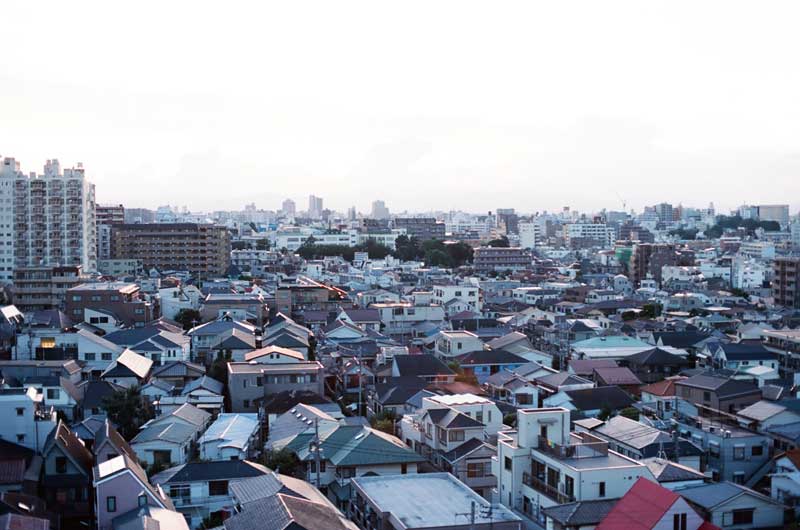
Tokyo is super dense. I love how so few of the houses are lined up in this irregular web of small streets.

世田谷の畑でトウモロコシが育っています。農大に行く途中は、住宅が多いです。
To get to Nodai, I bike along a long and straight road covering an old water pipe. Last time I saw this small corn field in Setagaya, surrounded by various types of dense housing.
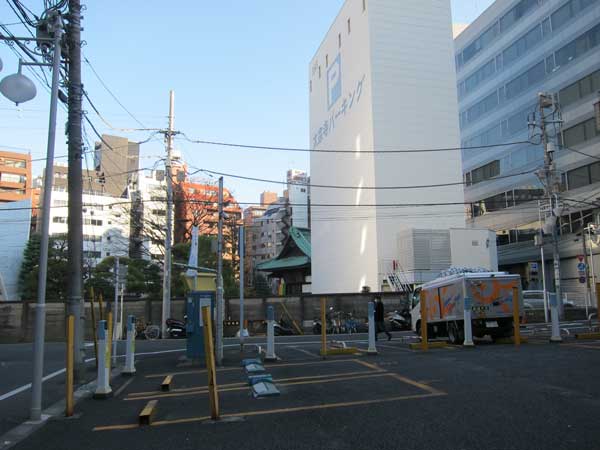
仮設の半永久的な駐車所はお寺やオフィスビルやマンションに囲まれています。高いエレベーターの駐車場はお寺の土地を使っているそうです。
In the foreground, there’s an automated surface parking lot on a lot that may get developed. The tall white structure is an elevated parking lot that is semi-permanent, and it appears to have been erected on the property of a fairly large temple and graveyard. On either side, offices and apartment buildings frame a dense and changing city.
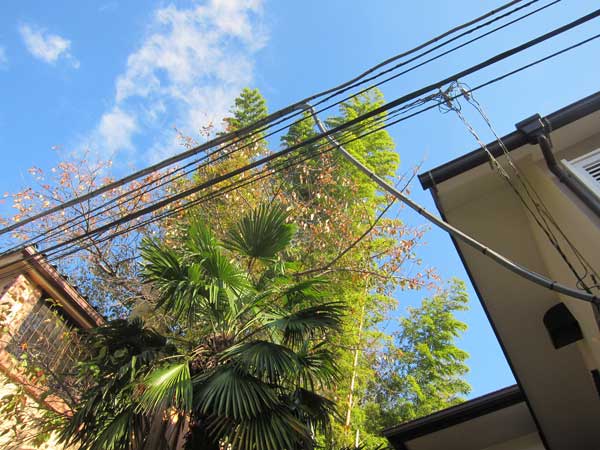
建物の間の狭いところが私をひきつけます。密集した都市のこんなスペ—スは、とても楽しいと思います。狭いのに、十五メートルの高さの竹と冬に葉を落としている木とシュロというヤシが元気そうです。
I was captivated by this narrow green space between residences in Omotesando. The places between spaces have a tremendous appeal in dense Tokyo. This tiny space supports 15 meter tall bamboo, a tree shedding its leaves for winter, and the ubiquitous shuro palm tree that self-seeds throughout Tokyo.

「espalier」というフランス語の意味は木を垣根仕立てにすることです。東京ではちょっと珍しいですけど、混雑した都市の中で、この二次元にされた植物は適切です。最近、学校の前に背の高い垣根仕立てにした柿の木を見ました。
I am a big fan of espaliered trees. By pruning a tree into a 2D shape, it fits into the dense urban landscape. Here’s a mature, espaliered persimmon tree in front of a public school in Aoyama. I wonder if the kids will eat the fruit.
I am going to be posting this week different fall fruit trees I’ve seen over the past few weeks. What is your favorite urban fruit tree?

青山の路地で風花という花屋を訪れるのがいつも楽しみです。壁の庭本当に美しいだと思っています。
Set off from the main street in Aoyama (246), Kaza Hana is one of my favorite Tokyo flower and garden design stores. I love how they have transformed the exterior of the shop into an incredibly dense and complex vertical garden. It’s a great place for lunch or coffee, or to pick up a gift. Or just admire the amazing wall gardens and displays.
When I was there, I bought a bouquet of moss-like carnations called テマリソウ (temarisou) as an office gift for Tokyo Art Beat. I hadn’t seen this bloom sold before, and it seems to have recently been introduced to European florists by Dutch plant breeder Hilverda Green Trick Carnation as Dianthus barbatus “Green Trick.”
Related: see photos and story from last year’s visit.
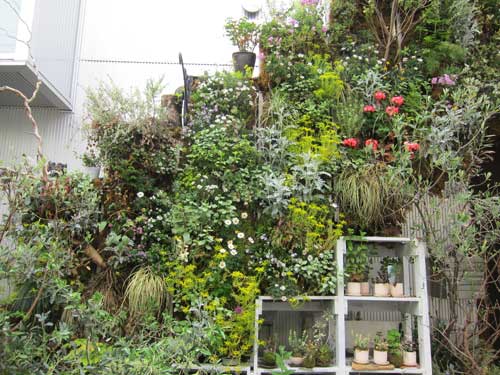
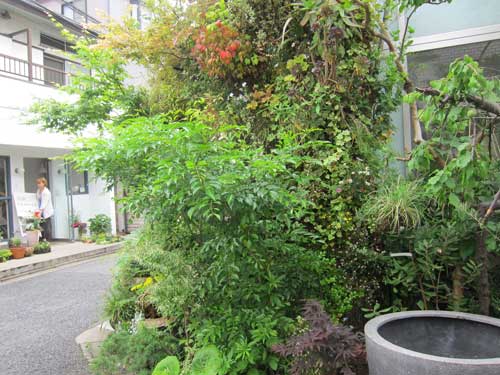
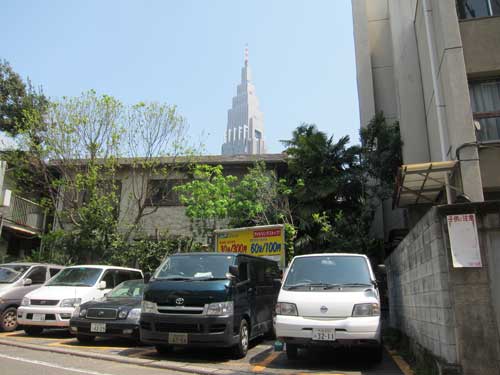
この代々木の写真には、風景が3つ見えます。この組み合わせはとても東京らしいです。
This image sums up my love of Tokyo green spaces. In the background is the iconic Docomo Tower in Shinjuku. In the foreground is a typical Tokyo sight: a lot where the old structure has been raised is now used for hourly parking. In the middle is an older residence whose wild garden is thriving through neglect and the absence of redevelopment. Tokyo is a dense place full of the iconic and prosaic, living nature and concrete structures, traces of the past and constant change.
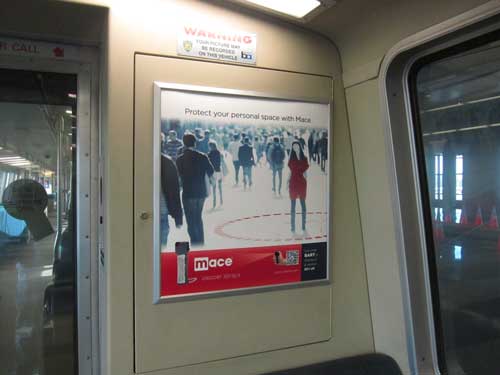
Riding the BART, the San Francisco Bay Area transit line, I was surprised to see this ad for mace, with the offer to get a 30% discount by typing in BART during the online check-out.
The idea that you can use a powerful chemical irritant to create a four meter wide personal space in public seems laughable in a dense city like Tokyo. Here, you can wear a face mask and maybe get a few extra centimeters of personal space as people may be afraid of influenza. To get 4 meters of space, you would have to smell very bad.
Are there other ways to feel safe in public? In the US, is it really OK to use mace when you are not being attacked and just want some extra breathing room?

木のあいだから、富士山が見える。神社のおかげで、このふたつの木は大きくなりました。
Recently I was helping my friend Matt making bonsais in his Roka-koen apartment in Setagaya when I saw this incredible sunset. This is his view looking west from his fifth floor apartment. It’s amazing how dense Tokyo is, and how far the city spreads out from the center.
A small Shinto shrine is the reason that these two giant trees are still there. Dating back perhaps to just after the war, these trees seem to be an important stepping stone for neighborhood and regional birds. With the clear winter skies and the leaves gone, you can see Mount Fuji through the trees.
Why aren’t mature trees recognized as a vital urban resource? How can these small islands of nature be connected with larger parks and other micro-green spaces? What is the role of Shinto as a religion and as thousands of property owners in supporting urban wildlife?

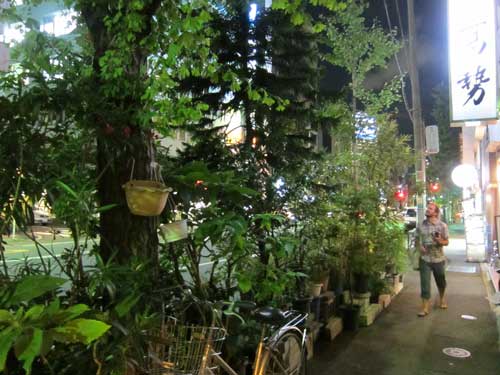
Walking at night in Chiyoda after a meeting at 3331 Arts Chiyoda, Chris and I found an amazingly dense and mature sidewalk garden that seems to be tended by a sushi restaurant. The planting is amazingly thick, creating a green wall between the sidewalk and the large boulevard in front of the restaurant. I like how the owners felt they could own this space and sacrifice some pedestrian space to make the small area around them so much nicer.
There’s a variety of trees and bushes and small plants in recycled pots and layered on cinder blocks (called “breeze blocks” by the New Zealanders) and other found stuff including beer crates, wood, bricks, and blocks. There’s even two plastic pots hanging from a ginko street tree that are currently empty. Makes me want to contribute something!

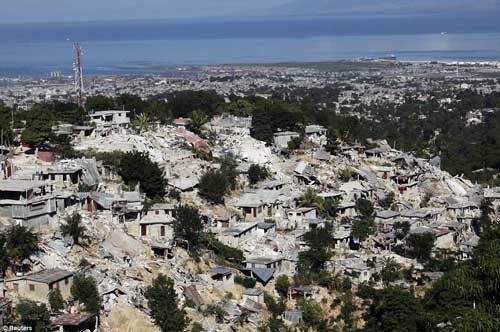
Urban planners Matias Echanove and Rahul Srivastava have a provocative essay in the New York Times about how post-war Tokyo can serve as an example of rebuilding Haiti. Researchers and activists who have worked in Tokyo and Dharavi, Mumbia, the authors evoke the strength of Port-au-Prince in its “urban landscapes (of) communities, street life, resourcefulness, aspirations and dynamic local exchanges.”
They urge a decentralized and highly participatory urban renewal with government investment in infrastructure and dense, low-level structures built by local efforts. I like their view that cities are about resourceful people and not large-scale developments. It is particularly timely to remember now how Tokyo rebuilt after the war (and the 1923 Kanto earthquake) and became a megacity that combines futuristic elements with a vibrant civic life.
You can learn more about their work at Urbz, “user-generated cities.” Below is an image from the Japan Society website of the 1923 Kanto earthquake in Tokyo.
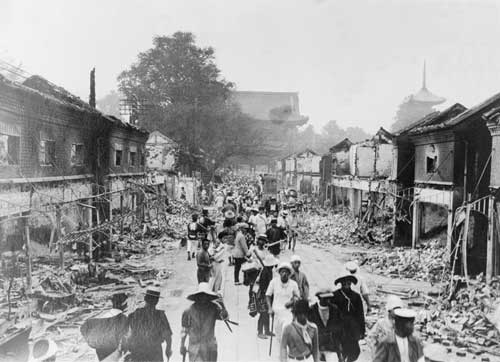

In urban settings, shrines and the entrances to cemeteries are open all day and night. Especially at night, they provide equal doses of nature and mystery that is both within and separate from normal urban life. These long exposure photos capture some of the magical beauty of nighttime trees, plants, shadows and stones.
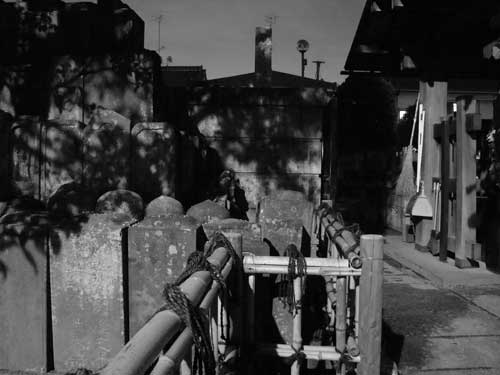
This experience in a nighttime cemetery reminds me of a term I recently learned from a Tokyo University professor who works at Hakuhodo: harappa (原っぱ). Harappa is an in-between urban and wild place that traditionally allowed children a space to play and explore. It could be a meadow, a grove of trees, or an abandoned building. With ever increasing construction and denser urban lives, these liminal spaces are harder to find. Shrines function as one of the most solid barriers against total urbanization.
A small tip: I recently learned how to take crisp nighttime photos with an inexpensive digital camera. To avoid shaking and blurring from long exposures, use the timer and set the camera on a hard surface.
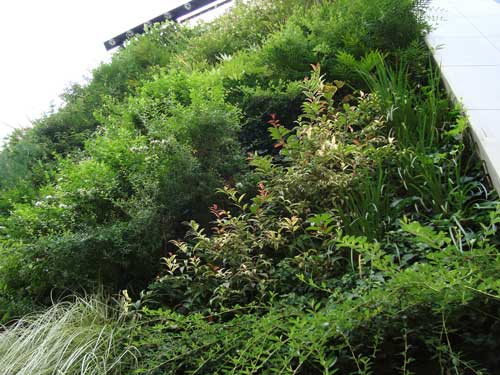
A friend guided me to an amazing green wall outside Feria, a nightclub in Roppongi, in a small alley across from Midtown. Climbing the entire front facade, this four story vertical garden is densely planted and lush. I was told that it’s about three years old.
Here’s an image of the context.
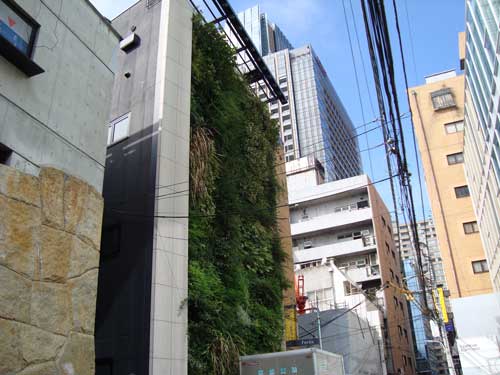
And lastly the view from the street.

Feria’s website shows how cool the vertical garden looks illuminated at night. I am intrigued that the vertical garden is the core element of the nightclub’s visual identity, in person and online.
